Lavender is a beautiful and versatile plant. It’s fragrant, blooms for months, and can be used in cooking, crafts, and more. For gardeners looking to add some life to their outdoor spaces without dedicating too much time or space to it, lavender is the perfect choice! With just a few tips and tricks, you can create a small lavender garden that looks stunning and smells divine. In this post, we answer some of the most common questions about small lavender garden ideas and provide useful tips on how to bring them to life. So keep reading to find out more!
Design A Garden Path With Lavender Borders
One of the easiest and most effective ways to make a statement in your outdoor space is by creating a garden path with lavender borders. This not only helps define your space, but also adds a delightful fragrance to the air. To create this look, simply choose a pathway material that coordinates with your existing landscaping and plant low-growing varieties of lavender in front of it. Planting them close together will give you a wonderfully fragrant, dense border that looks great and is easy to maintain. [1]
Try Underplanting Trees With Lavender
Underplanting trees with lavender can be a great way to add structure and fragrance to your garden. Lavender, being an evergreen, will provide all year round greenery and the aroma is simply heavenly. Depending on the size of your garden, you could pick small ready-trained trees such as peach or apricot which have a nice dwarfing habit, or larger trees such as apples and pears.
Just ensure that the trees you choose suit your growing conditions and that they get enough sun for the lavender to flourish. Planting them in well-drained soil and mulching the area around them will help to keep your lavender healthy. [1]
Let Lavender Tumble Over Walls
If you want to create a stunning statement with your small lavender garden, consider letting the plants spill over walls. Walls are a great way to contain the growth of an area and lavender is perfect for this purpose. It will cascade beautifully down, adding fragrance and texture to its surroundings. You can also use shrubs such as rosemary and thyme to compliment the lavender for a fragrant garden. [1]
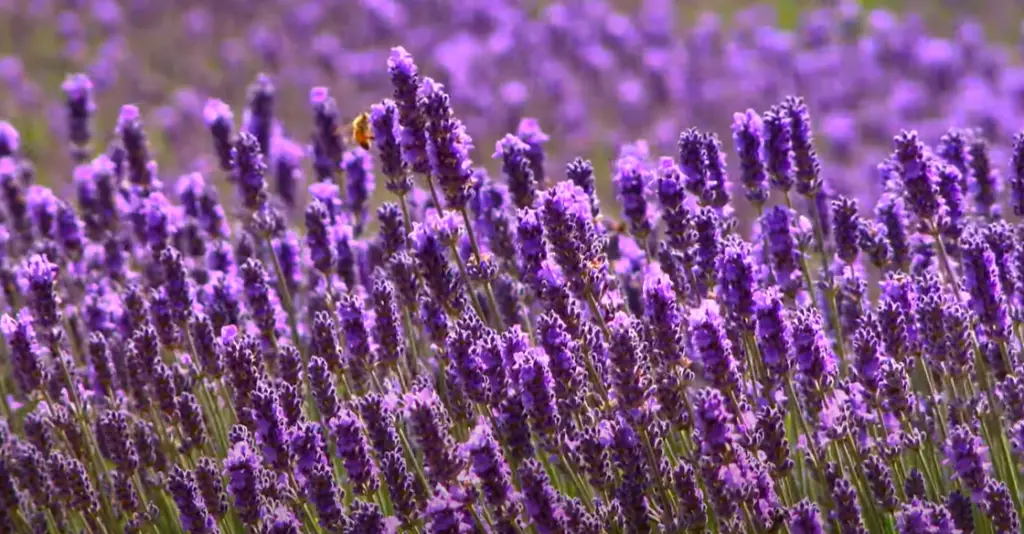
Choose Partner Plants That Lavender Loves
Though lavender grows well on its own, it will also thrive with the company of certain companion plants. In particular, most herbs make excellent partners for this fragrant shrub. Not only do they require similar growing conditions and look great together, but they also serve a practical purpose. Herbs such as thyme, oregano and rosemary can all help to repel the pests that are drawn in by the sweet scent of lavender.
Other good partners for lavender include salvia, asters, and ferns. These plants add texture and color to complementing your lavender garden and create an eye-catching display. If you’re planting an all-lavender garden, be sure to include a variety of shapes and sizes for maximum impact. [1]
Plant Lavender Around Seats
Lavender has a calming, relaxing scent, making it an ideal plant to be planted around seats and stones. Planting lavender around your seating area will provide the perfect ambiance for entertaining guests or just taking some time for yourself. If you don’t have any outdoor seating areas in your garden, consider investing in one. This will give you somewhere to sit and admire your beautiful lavender garden. You can also use stones for seating if you don’t have any outdoor furniture. Place a few stones in your lavender garden and it will be the perfect place to relax! [1]
Add Lavender To A Herb Garden
If you’re short on space, add lavender to a herb garden. Lavender’s fragrant aroma adds a relaxing element to your otherwise utilitarian garden and its low maintenance nature makes it the perfect addition to any herb-filled patch. Plant it in between other herbs like thyme and oregano for an attractive look and added functionality. Lavender also helps to repel mosquitoes, so it will add more than just a pleasant scent and visual effect to your herb garden. Keep in mind that lavender needs full sun and well-draining soil, so choose an area of your yard that receives plenty of sunlight and won’t become waterlogged after a heavy rain. With the right care, your lavender plants will last for years to come. [1]
Border Steps With Lavender
If you want to create a beautiful outdoor space, then one way of doing this is by incorporating lavender into the design. A border of steps with lavender will not only look great but it will also provide a pleasant aroma that can be enjoyed each time visitors come around. Planting lavender along the perimeter of your garden (or even within it) can create an inviting atmosphere that will put smiles on their faces.
When planting, make sure you choose a variety of lavender that is suitable for your climate. It’s also important to ensure the area you are planting in has good drainage and soil quality, as this will guarantee optimal growth and health of your plants. Additionally, lavender does best in a spot that gets plenty of sunlight during the day. [1]
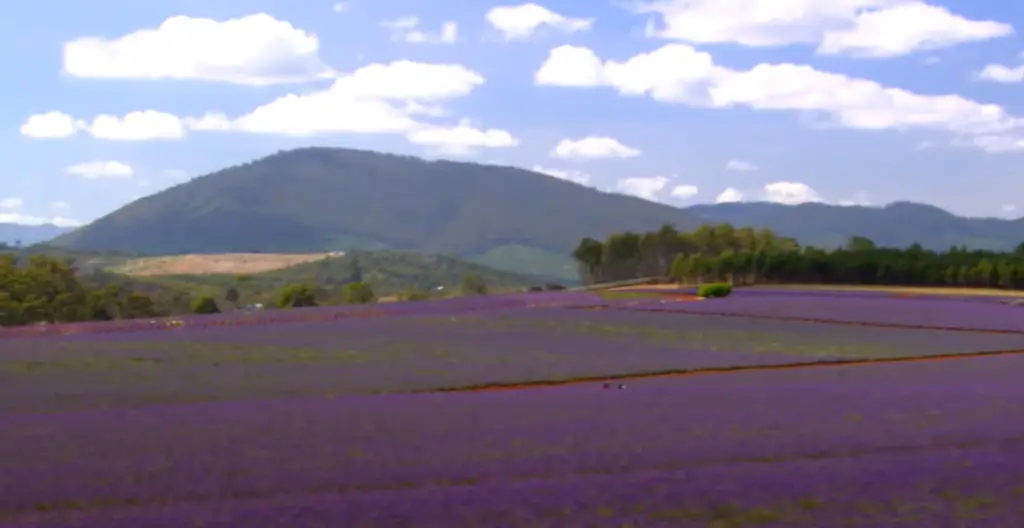
Include Lavender In A Sensory Garden Design
Creating a sensory garden is one of the most enjoyable and beneficial small lavender garden ideas. Lavender is known for its calming properties, making it the perfect contribution to an outdoor space that helps you relax and take in all of nature’s beauty.
Start by planting various colors and varieties of lavender around your patio or deck. You can include other plants and herbs such as rosemary and thyme to fill in the gaps, creating an aromatic haven that will draw you in each time you step outside.
To add another layer of sensory pleasure, incorporate a variety of textures into your garden design. For example, choose stones that have varying roughness or smoothness – this will help bring a tactile quality to the area that can’t be replicated.
Finally, include decorative elements such as birdbaths, gazing balls or trellises to further enhance your small lavender garden design. Including these pieces of decoration in your garden’s landscape will create an environment full of pleasant sights and sounds. [1]
Landscape With Lavender In A Rock Garden
A rock garden is a great way to showcase lavender plants. Choose rocks of different sizes and shapes, and lay them out in a pleasing pattern or form. You can also add terraces made from stones or boulders for greater depth and interest. To achieve the most impact from your design, place low-growing plants such as creeping thyme and dianthus in between the rocks. Lavender is a hardy plant, so it will thrive even when surrounded by stones.
When planting lavender in your rock garden, use small groupings rather than single plants for greater visual impact. You can also add other drought-tolerant plants like rosemary, artemisia, and santolina to create a stunning look. To make the planting easier, consider using a pre-made soil mix that is specially formulated for rock gardens. [1]
Introduce A Smartly Clipped Border
A small lavender garden can be a wonderful addition to any home. It doesn’t take much space and brings an air of relaxation and serenity with it. One way to create an inviting atmosphere in your small lavender garden is by introducing a smartly clipped border. Depending on the size of your garden, you could choose from a variety of hedging plants such as box, holly or yew. These are great options for defining the borders without taking up too much room. Alternatively, if you prefer something a little more sculptural, you could opt for some ornamental grasses or even an evergreen shrub such as rosemary. Whatever you choose, it will give your garden a more structured feel and will add another layer to the design. [1]
Frame A Doorway With Lavender
One of the most enchanting small lavender garden ideas is to frame a doorway with lavender. You can use either one or two varieties, depending on the look you’re hoping to achieve. Plant your lavenders in rows and shape them into a natural arch as they grow outwards. This creates an eye-catching feature that will be a delight to look at and smell. Plant lavender in containers of different sizes if you don’t have enough space for creating an arch, or place the potted plants around your doorstep as a colorful border. [1]
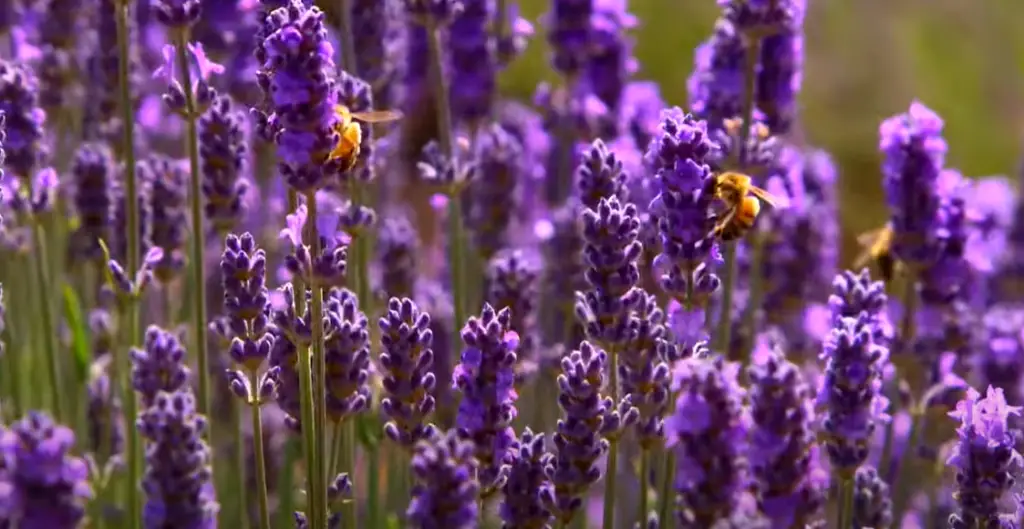
Put Lavender Top For Med-Inspired Gardens
Lavender is often associated with the Mediterranean due to its fragrant aroma, and it looks just as beautiful in a garden. If you have limited space for a garden, try incorporating lavender into your design for a med-inspired look. Plant some shrubs or trees around the edges of the garden, then layer on low-growing ground cover plants like lavender for a dreamy effect. The fragrant aroma is sure to make this garden one of your favorite spots in the yard. [1]
Mix Lavender Plants With Topiary
Topiary is the art of creating trees, shrubs and plants into decorative shapes. By combining this technique with your lavender garden you can create a look that’s truly unique. Start by planting several varieties of lavender near each other in rows or clumps, then snip off the top growth of some to keep them low and neat. You can also use topiary to shape a few of your lavender plants into cones or balls for added visual interest. [1]
Use Lavender For Ground Cover
Lavender is great for ground cover, as it adds color and texture to a garden. It’s also very hardy and can withstand temperatures from -10°F to 32°F. Just keep in mind that it needs plenty of sun and well-draining soil to thrive. You might want to consider adding mulch around your lavender to help keep the soil moist.
To make the most of your small lavender garden, try planting several different varieties. This will give you more foliage and color variety for a pleasing effect. You can also use lavender as an edging around pathways or beds for a neat look. If you’re using larger varieties of lavender, you can prune them to keep them lower and help the plants fit into a smaller space. [1]
Create A Wow Factor Front Yard With Lavender
If you want to create a show stopping front yard, why not try planting lavender? Lavender is easy to care for and will add a beautiful and fragrant touch to your garden. As an added bonus it attracts pollinators like butterflies and bees so you can also do your bit to help the environment.
Once you have chosen the right variety for your area, it’s time to think about how you want to design your garden. If you have a large area, try planting two rows of lavender with a small path between them. This will create an eye-catching border that adds color and texture to your yard. [1]
Mix Up Old And New
If you’re feeling creative and want to mix up traditional lavender garden ideas with something more modern, try combining different elements of the old and new. Plant a few traditional varieties of lavender in classic colors such as purple or white, but then add some unexpected colors like pink or yellow to give your garden an edge. You can also add some modern touches to your garden with bright pots or bold furniture pieces. [1]

A Lavender Flower Bed
When it comes to small garden ideas, a lavender flower bed is a classic choice. Planting them in rows or in clusters with other flowers can create an eye-catching design that’s low-maintenance and long-lasting. Lavender has many benefits – its fragrance repels insects, its foliage deters cats, and the flowers can be harvested for medicinal and culinary purposes.
When planning a small lavender garden, remember that it’s best to grow them in full sun with well-draining soil. It is also important to water regularly as they are drought tolerant but do need some moisture. Prune them back after flowering to keep them from getting too long and leggy.
To make the most of a small space, consider planting a variety of lavender flowers together for an interesting effect. English Lavender (Lavandula angustifolia) is the most fragrant, but there are other varieties such as French Lavender (Lavandula stoechas) that have larger and showier flowers. [2]
Lavender Sloping Garden
For those gardeners who are blessed with a sloping area of land, a small lavender garden is the perfect opportunity to show off the beauty and versatility of this plant. Sloping gardens can be transformed into stunning displays of color by using hardy evergreen lavender plants with contrasting ground cover and other low-lying plants such as chamomile and thyme. To create an even more eye-catching effect, add in a few tall spires of purple perennial varieties such as English lavender or French lavender to bring the garden together and provide height and texture. [2]
Lavender Fences
Lavender is a beautiful flower that makes for an impressive fence. You can plant lavender around the perimeter of your garden and it will act as a natural barrier, keeping pests away and adding color to your landscape. Additionally, you can train the plants to grow along or up a trellis, archway, or other structure in your garden. This will add a whimsical touch to the area and make it feel even more inviting.
You can also use lavender as a centerpiece in your small garden. A single, large pot of lavender can be placed in the center of your garden for an eye-catching display. For a fun twist, you can add other plants and flowers around the lavender for a colorful array of foliage. [2]
A Beautiful Lavender Hedge
If you’re looking for a way to add fragrant beauty and color to your garden, consider planting a lavender hedge. Lavender is an evergreen shrub that blooms in the summer months with beautiful purple flowers. A lavender hedge can provide visual interest and attract bees and other pollinators to your garden. [2]
Lavender-Lined Garden Pathway
Create a fragrant and inviting entrance to your garden by planting a lavender-lined path. To do this, simply dig out an area of the ground along your existing pathway and line it with lavender plants. You can space them 18 inches apart for a more informal look or 6-9 inches for a formal look. Lavender does best in fertile, well-drained soils so it is important to prepare the soil with a good quality compost or mulch before planting. For added impact, you can use a combination of low-growing lavender species such as English Lavender (Lavandula angustifolia) and taller growing varieties such as Spanish Lavender (Lavandula stoechas) to create a layered effect. Once planted, add some stepping stones or gravel for an extra decorative touch. With regular pruning and maintenance, you’ll soon have a beautiful lavender-lined path that smells as delightful as it looks! [2]
Lavender Bushes With Garden Path
A great way to turn a small corner of your garden into an oasis is to plant lavender bushes along a path. This will provide a beautiful, fragrant pathway through your garden and make it feel larger than it truly is. You can choose from several varieties of lavender that vary in size, height, and colour – so you can customize the look of your garden. Be sure to plant the lavender in an area with full sun and well-draining soil for best results. You may even want to consider adding a few stones or gravel along the pathway for a more natural feel. [2]

Lavender Flower Bed With Shrubs
Creating a flower bed of lavender and shrubs is a great way to add color, texture, and fragrance to a small garden space. When it comes to growing lavender in beds with shrubs, there are several combinations that work well together.
One option is to combine lavender with rosemary or santolina. Rosemary and santolina are both evergreen shrubs that have a similar appearance to lavender, but with different colors. Rosemary will add more blues and purples to the flower bed, while santolina brings out yellow and gold tones. Both plants can be grown in full sun or partial shade, depending on their variety. [2]
Lavender Shrub Garden
If you’re looking for a more permanent solution to your lavender garden, then consider planting lavender shrubs. This might be the right choice if you want a low-maintenance garden that also adds an elegant touch to your home’s exterior.
Lavender Shrub gardens are quite easy to maintain, as they don’t require much pruning and only need to be watered occasionally. When choosing which Lavender Shrubs to plant, you should consider the location and size of your garden. For example, if you have a small courtyard or balcony, then you may want to go with a shorter shrub such as English lavender (Lavandula angustifolia). If you have a larger space, then French lavender (Lavandula dentata) or Spanish lavender (Lavandula stoechas) might be better choices. [2]
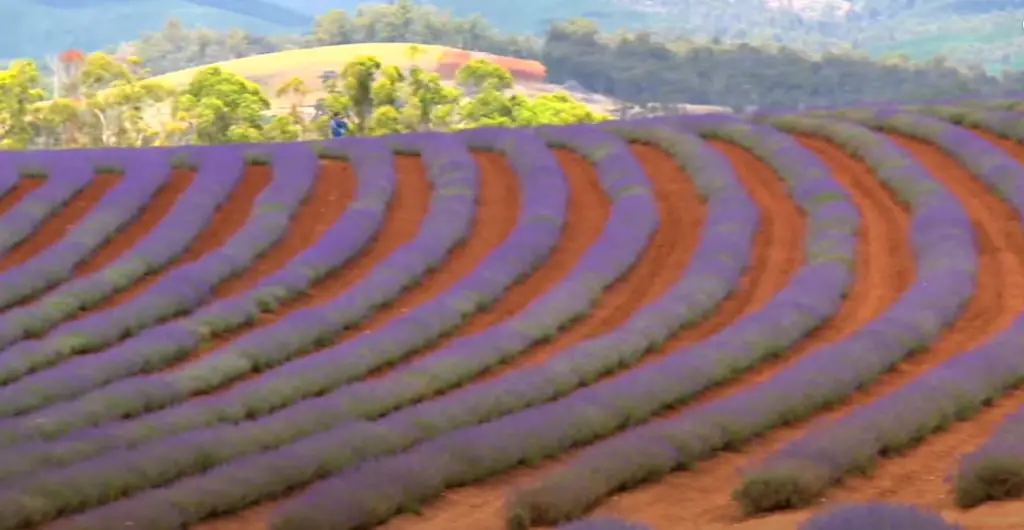
FAQ
What plants go with lavender?
The best companion plants to go with lavender are those that have similar growing requirements and can draw attention away from the strong aroma of this unique herb. Plants like rosemary, thyme, oregano, sage, salvia and yarrow all thrive in dry conditions with well-drained soil. They also offer colorful foliage and fragrant blooms that can help soften the scent of lavender and create a more inviting atmosphere in your garden.
Where is the best place to plant lavender?
Lavender prefers full sun, so choose an area of your garden that gets at least 6-8 hours of direct sunlight every day. It’s also important to note that lavender doesn’t tolerate wet feet, so you’ll need to make sure the soil is well-drained. If possible, raised beds or containers are great options for growing lavender, as they allow the soil to dry out quickly and prevent waterlogging.
Should lavender be cut back?
In general, lavender should be pruned annually to encourage new growth and keep it looking its best. Pruning late winter or early spring is ideal as this will promote bushy growth and more fragrant blooms in the summer months. To give your plants a light trim, simply snip off any dead or dying stems just above where they meet the main stem, making sure to leave at least two pairs of leaves. This will help promote healthy growth and keep your lavender looking its best.
What does lavender look like in winter?
During the winter months, lavender plants will look rather unassuming. The stems will start to brown and the foliage may die back, but this is all part of their natural life cycle. While they may not be as vibrant as during the summer, they can still bring a subtle beauty to your garden with their grey-green hue and delicate fragrant blooms. To keep your plants looking their best, make sure to prune them regularly. This will help encourage strong new growth in the spring.
Can you take cuttings from lavender?
Yes! Taking cuttings from lavender is actually a great way to propagate your plants and create new ones. The best time to take cuttings is during late spring or early summer when the weather is mild. To do this, simply use a sharp knife or pair of scissors to snip off young growth just below the leaf node. Place the cutting in a pot, water it regularly and keep it in a warm spot with plenty of light until you have strong roots and new growth. After this, you can re-plant them into your garden or transfer them to a container.
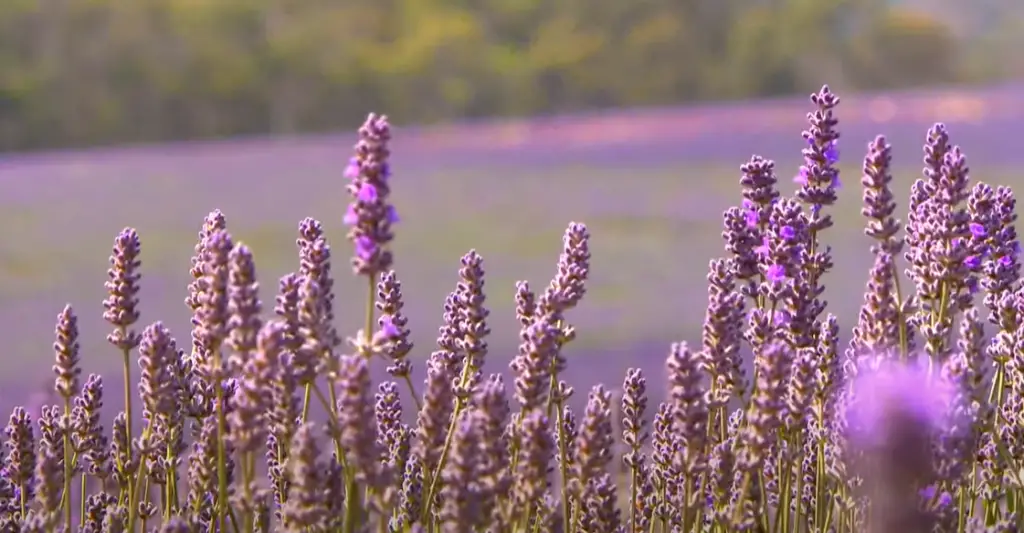
Can you put lavender cuttings straight in the ground?
Yes, you can put lavender cuttings straight in the ground. However, it’s best to wait until the weather is warm and all danger of frost has passed before planting them outdoors. When putting your lavender cuttings in the ground, make sure to dig a hole that is twice as deep as the cutting and fill it with some organic compost or potting soil. Water the cuttings thoroughly to help them settle in and apply a light mulch to retain moisture and keep weeds at bay. With plenty of warmth and sunshine, your lavender cuttings should soon start to flourish in their new home!
Useful Video: Lavender | GARDEN | Great Home Ideas
Conclusion
Creating a small lavender garden is the perfect way to add beauty and fragrance to any outdoor space. Whether you’re starting from scratch or just sprucing up an existing area, it’s easy to create a lovely garden with these ideas. Consider container growing if your space is limited and be sure to use plenty of rich organic soil that drains well. You can also add some features like raised beds, a fence or trellis for climbing plants and even outdoor lighting to enhance your garden. Finally, don’t forget to prune your lavender regularly so it stays healthy and beautiful. With the right care and attention, you can have a stunning small lavender garden in no time at all. Happy gardening!
References:
- https://www.gardeningetc.com/design/landscaping-with-lavender’
- https://balconygardenweb.com/landscaping-with-lavender/





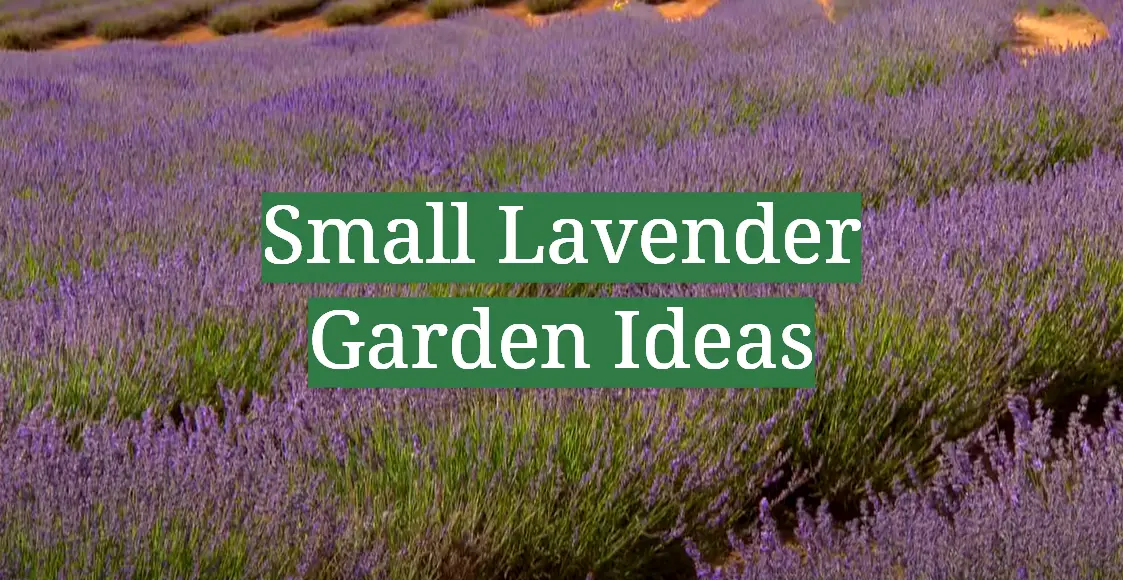




Leave a Reply
View Comments